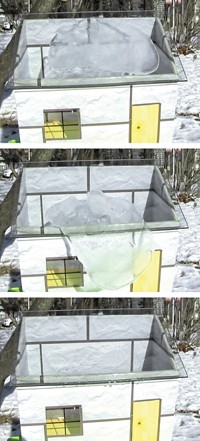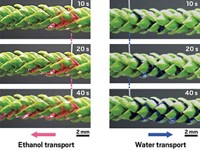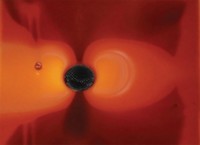Advertisement
Grab your lab coat. Let's get started
Welcome!
Welcome!
Create an account below to get 6 C&EN articles per month, receive newsletters and more - all free.
It seems this is your first time logging in online. Please enter the following information to continue.
As an ACS member you automatically get access to this site. All we need is few more details to create your reading experience.
Not you? Sign in with a different account.
Not you? Sign in with a different account.
ERROR 1
ERROR 1
ERROR 2
ERROR 2
ERROR 2
ERROR 2
ERROR 2
Password and Confirm password must match.
If you have an ACS member number, please enter it here so we can link this account to your membership. (optional)
ERROR 2
ACS values your privacy. By submitting your information, you are gaining access to C&EN and subscribing to our weekly newsletter. We use the information you provide to make your reading experience better, and we will never sell your data to third party members.
Materials
Slippery microgrooves help harvest fog
Tuning surface shape and chemistry lets hydrophilic materials shed clingy water droplets
by Kerri Jansen
April 22, 2018
| A version of this story appeared in
Volume 96, Issue 17
Collecting moisture from air is a promising technique for providing water to the world’s arid regions. But the hydrophilic surfaces that are sometimes used for this purpose prefer to hold on to water rather than give it up for consumption. Scientists from Pennsylvania State University and the University of Texas, Dallas, have now developed a lubricated hydrophilic surface that both attracts and sheds water efficiently, thanks to parallel, microscopic grooves etched into the surface that promote drainage (Sci. Adv. 2018, DOI: 10.1126/sciadv.aaq0919). The microgrooves, which also provide increased surface area on which droplets can form, are coated with a thin layer of hydrophilic lubricant that is held in place by nanoscale roughness on the surface. In simulated foggy conditions provided by a conventional room humidifier, the grooved, lubricated surfaces outperformed a variety of other hydrophilic surface structures, as well as water-repellent surfaces, in both droplet formation and shedding.





Join the conversation
Contact the reporter
Submit a Letter to the Editor for publication
Engage with us on Twitter